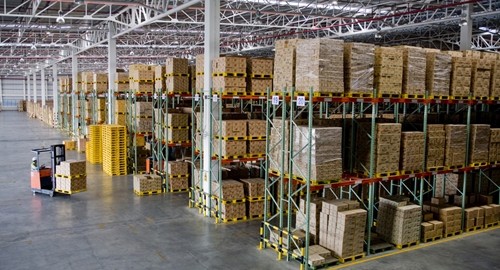
Data is a hot-button topic in many business conversations. Businesses must gather large amounts of information, integrate it across systems and learn to analyze it to keep up with market demands and stay ahead of the competition. All of this pressure to get deeper into data can distract from the simple need to find the right information and develop strategies that make that data actionable for everyday management.
In fact, the need to improve management is a growing movement across the warehouse sector.
Bringing management excellence to warehouses
Visibility is essential in warehouses. Understanding exactly what is happening with all assets – human resources, goods and equipment – is critical. For a long time, however, the industry struggled to advance in this area. A Logistics Management report detailed one presentation made by a Gartner researcher at a conference more than half a decade ago to emphasize that, at least at the time, warehouse management software was so focused on specific processes that it missed the big picture. The presenter, Dwight Klappich, said that warehouse management software technologies were lacking the management and were simply being used for transactional processing.
Those days are slipping away, however, as Logistics Management explained that recent innovation across the warehouse management software sector have contributed to significant gains in improving how warehouses operate. Essentially, WMS technologies have gotten better at not only gathering relevant data from across the warehouse, but actually using that information to fuel actionable gains.
Considering the need for greater visibility
This need for more actionable insights from data is evident in a recent Manufacturing Business Technology report. The news source explained that many organizations that implement WMS technologies still neglect key areas of analysis that are needed to improve management and contribute to the business' bottom line. These hidden costs within the warehouse fall to the wayside as organizations try to keep up with rapidly changing industry demands and pressure to get products out to customers quickly. The businesses that neglect hidden costs can end up with expenses in the warehouse that undermine their bottom lines.
According to the news source, hidden warehouse costs include factors ranging from time spent moving items and equipment through the facility to poor optimization of how goods are organized and placed throughout the warehouse. For example, the report explained that many machines and people within a warehouse end up traveling around the facility without being on a specific task. Perhaps an employee just completed a process and now needs to travel somewhere else to get to the next work order. Or maybe a forklift was just used to move a pallet and now needs to be driven, empty, across to the other side of the warehouse. These trips waste time, which means lost money, and could potentially be resolved, at least to some degree, through better space optimization.
Using WMS technologies to work smarter
Warehouse environments require a great deal of precision. As organizations develop their fulfillment services strategies, they must look beyond anecdotal information and data sets and instead consider raw data, with sufficient sample sizes, to fully understand how different tasks and processes impact one another. To this end, modern WMS platforms provide the high degree of visibility businesses need to get a clear view of how their warehouses operate, what bottlenecks are in place and what happens when changes are made. The key here is to constantly look to improve and ensure you are getting data from the wide range of sources needed to identify any hidden costs within your warehouse.
